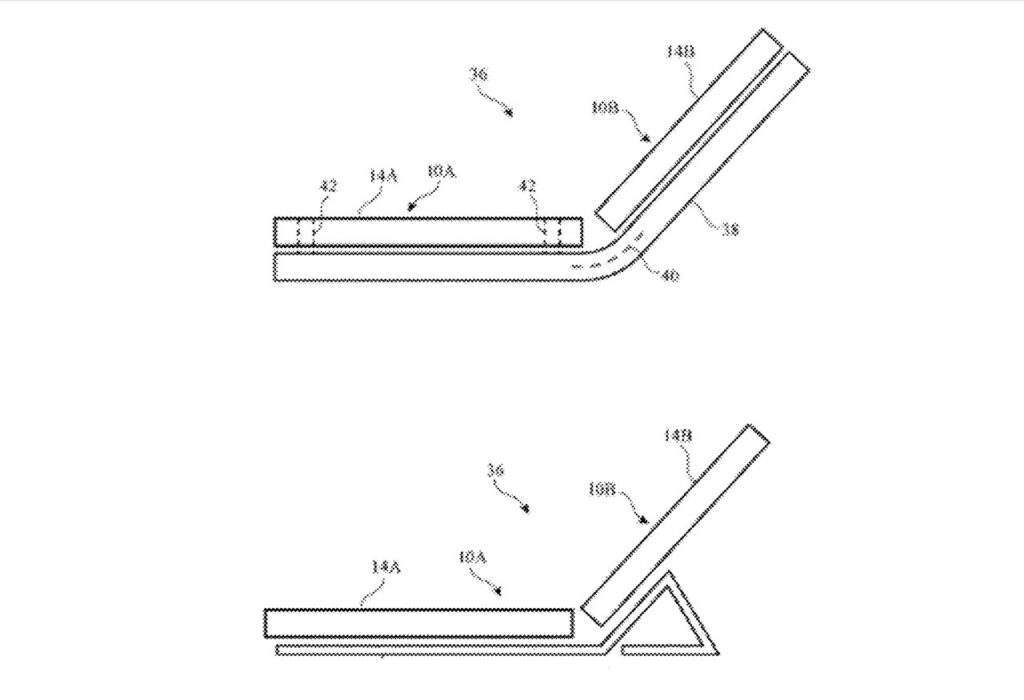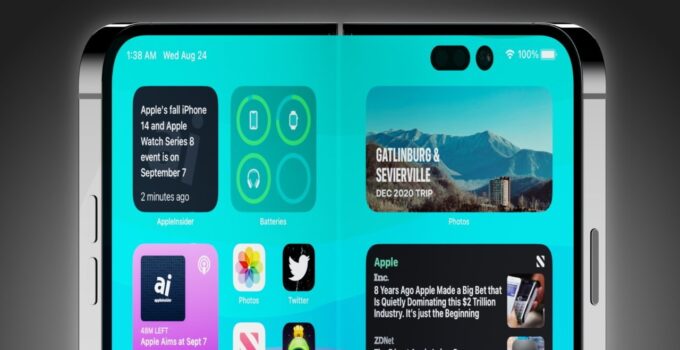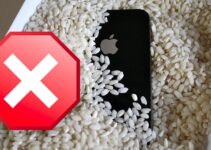The foldable iPhone could automatically protect itself from drops. Here is the solution devised by Apple to prevent the iPhone Fold from breaking. Apple is working on a technology to allow iPhones with flexible screens to sense when they’re dropped, so they immediately fold back to minimize damage.
The “realityOS” platform discovered in Apple’s open source code
In this new patent, Apple describes ways to protect future foldable devices.
Whether the device folds on a hinge or a screen can be pulled out of a base chassis, Apple is proposing that the display itself can detach. Instead of a flimsy hinge or flimsy connection to the device, the display can detach or bend in a way that protects the screen.
Specifically, it could do this when it senses the need, such as when it detects that the device has been dropped. The patent focuses on how to react to falls, but includes drawings of various types of folding devices.
“Mobile devices with foldable and roll-up displays can use a sensor to detect vertical acceleration (for example, acceleration relative to the ground) and determine if the mobile device has fallen,” the patent application reads. “If the sensor detects that the mobile device has been dropped, the foldable device can retract at least partially to protect the fragile display from hitting the ground.”
“For example, the system may include activating a release mechanism for a hinged connection between a first display and a second display of the electronic device when vertical acceleration exceeds a predetermined threshold,” Apple continues, “where the Activation reduces an angle between the first display and the second display below a threshold angle”.

That proposal would clearly fit a foldable iPad or iPhone where there are two devices connected by a hinge.
“Bending the display to an angle of less than 180 degrees may also offer some protection,” the patent continues, “because the mobile device may cause the edges of the mobile device to strike rather than the display itself. Finally, a roll-up device can retract the display if predetermined acceleration limits are exceeded.”
It all depends, of course, on how quickly the device can register a fall. Obviously it also depends on how high it fell, so there can never be total protection against these types of events, but such proposals would help to better protect foldable and roll-up devices, which are necessarily more fragile than normal ones.
Unfortunately, we will have to wait several years before seeing a foldable iPhone on the market. Apparently, Apple intends to release a foldable MacBook or iPad first (2025?) and only then a Fold iPhone (2027?).



